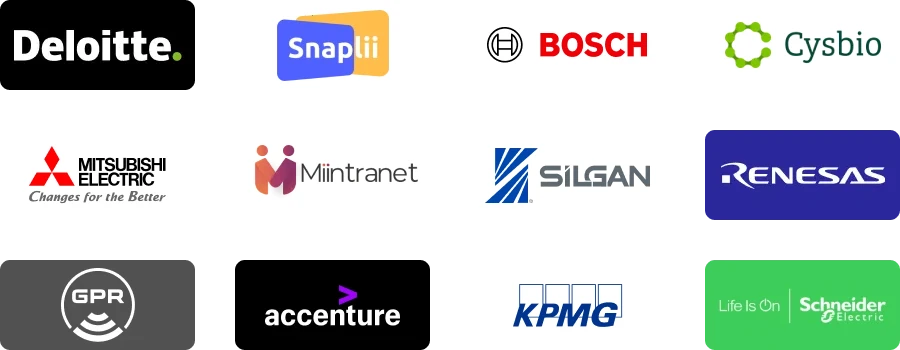| REPORT ATTRIBUTE |
DETAILS |
| Historical Period |
2019-2022 |
| Base Year |
2023 |
| Forecast Period |
2024-2032 |
| Japan Restorative and Endo Dentistry market Size 2023 |
USD 1,674.83 million |
| Japan Restorative and Endo Dentistry market, CAGR |
8.74% |
| Japan Restorative and Endo Dentistry market Size 2032 |
USD 3,673.98 million |
Market Overview
The Japan Restorative and Endo Dentistry market is projected to grow from USD 1,674.83 million in 2023 to an estimated USD 3,673.98 million by 2032, representing a compound annual growth rate (CAGR) of 8.74% from 2024 to 2032. This substantial growth underscores the rising demand for advanced dental procedures and innovative materials aimed at enhancing oral health outcomes.
Key drivers of this growth include the increasing prevalence of dental caries, periodontal diseases, and tooth loss among the aging population, coupled with rising awareness about oral health. Trends in the market indicate a significant shift toward minimally invasive procedures and the adoption of digital dentistry technologies, such as CAD/CAM systems and 3D printing, which improve precision and patient outcomes. Additionally, government initiatives supporting healthcare innovation and the inclusion of dental treatments in insurance policies further bolster market expansion.
Geographically, urban areas dominate the market due to the high concentration of dental clinics and hospitals with advanced equipment. However, rural areas are gradually witnessing growth driven by government-led healthcare programs. Key players in the Japan Restorative and Endo Dentistry market include Dentsply Sirona, 3M, GC Corporation, Kuraray Noritake Dental, and Shofu Inc., among others, who are actively investing in research and development to enhance product offerings and maintain competitive edges.
Access crucial information at unmatched prices!
Request your sample report today & start making informed decisions powered by Credence Research Inc.!
Download Sample
Market Insights
- The Japan Restorative and Endo Dentistry Market is projected to grow from USD 1,674.83 million in 2023 to USD 3,673.98 million by 2032, with a CAGR of 8.74% from 2024 to 2032.
- The rising aging population in Japan is a key driver, increasing the need for restorative and endodontic treatments due to dental issues like caries and tooth loss.
- The adoption of digital dentistry technologies, such as CAD/CAM systems, 3D printing, and AI-driven diagnostics, is significantly improving treatment precision and patient outcomes.
- Patients are increasingly opting for minimally invasive treatments, which preserve natural tooth structures while offering effective, aesthetic results.
- Despite market growth, high treatment costs and limited insurance coverage for advanced restorative and endodontic procedures pose challenges for wider adoption.
- Urban areas dominate the market due to better access to advanced dental technologies and clinics, while rural areas are gradually growing through government-supported healthcare initiatives.
- Major players like Dentsply Sirona, GC Corporation, and 3M are leading the market, with a focus on R&D and the introduction of innovative solutions to meet growing patient demands.
Market Drivers
Aging Population and Rising Prevalence of Dental Disorders
Japan’s rapidly aging population significantly contributes to the growth of the restorative and endodontic dentistry market. The prevalence of severe periodontal disease in people aged 15 and older stands at 20.6%, while the prevalence of edentulism in people over 20 years is 11.7%. The elderly demographic often requires complex restorative treatments, including crowns, bridges, and implants, as well as root canal therapies to address severe dental issues. Notably, over half (51.2%) of older people in Japan have achieved the goal of keeping at least 20 teeth at the age of 80 years, demonstrating the success of dental health initiatives.Moreover, preventive dental care and regular dental check-ups are becoming increasingly prioritized among the aging population. The age-adjusted and sex-adjusted mean number of missing teeth has shown a consistent decrease over time, from 6.80 in 2007 to 4.99 in 2017, reflecting improved dental care awareness and intervention. This trend directly correlates with improvements in periodontal conditions due to changes in oral hygiene level and oral health behavior.
Technological Advancements in Dental Care
The integration of advanced technologies in restorative and endodontic dentistry is transforming dental care in Japan. Digital dentistry innovations, including computer-aided design and manufacturing (CAD/CAM) systems, have enhanced the precision and efficiency of dental procedures. The CAD segment accounts for approximately 60% of the dental technology market, driven by the increasing adoption of digital impressions and intraoral scanners. These technologies enable dental professionals to offer customized restorations with enhanced accuracy and reduced turnaround times.Endodontic treatments have similarly benefited from technological advancements. The adoption of digital scanning and 3D printing technologies has improved the dental implant process, allowing for more accurate implant placement and customized prosthetics. Air abrasion techniques and micro dentistry approaches offer minimally invasive alternatives to traditional drilling, preserving more healthy tooth structure and reducing patient discomfort.
Increasing Awareness of Oral Health and Preventive Care
Public awareness of oral health’s importance has grown significantly in Japan, supported by initiatives like the ‘8020 movement’ launched in 1991 by the Japanese Ministry of Health, Labor and Welfare and the Japanese Dental Association. This program educates the population about the benefits of retaining 20 or more natural teeth at the age of 80, which is sufficient for maintaining masticatory function and aesthetic satisfaction. The success of these initiatives is evident in the national survey findings, which show a significant decrease in the number of missing teeth over a 10-year period.The inclusion of dental care in national health insurance coverage has made treatment more accessible. However, studies show that even among public assistance recipients who are exempt from dental care costs, only 37% visited a dentist in the past 6 months, compared to more than half of non-recipients. This indicates that while financial coverage is important, additional factors influence dental care utilization patterns.
Supportive Government Policies and Healthcare Infrastructure
Japan’s healthcare infrastructure and government policies play a pivotal role in driving the restorative and endodontic dentistry market. Dental care is integrated into the country’s universal healthcare system, which provides insurance coverage for a wide range of treatments, including restorative and endodontic procedures. This accessibility reduces financial barriers for patients, enabling them to seek high-quality dental care.Additionally, government-led initiatives aimed at enhancing dental education, promoting research, and adopting new technologies further strengthen the market. Investments in dental clinics and hospital infrastructure ensure the availability of advanced equipment and skilled professionals across urban and rural areas. These supportive policies, coupled with Japan’s focus on innovation, create a conducive environment for the growth of restorative and endodontic dentistry.
Market Trends
Adoption of Digital Dentistry and Technological Integration
The Japan restorative and endo dentistry market is witnessing a significant shift toward digital dentistry, driven by the integration of advanced technologies like CAD/CAM systems, 3D printing, and AI-powered diagnostic tools. Over 8,000 dental clinics in Japan have already adopted digital workflow systems, demonstrating the rapid technological transformation in the sector. These technologies have revolutionized the dental workflow by improving precision, reducing treatment times, and enhancing patient outcomes. Japanese dental practices utilizing CAD/CAM systems report a reduction in restoration production time by up to 60 minutes per case. CAD/CAM systems enable dentists to design and manufacture customized dental restorations, such as crowns and bridges, with superior accuracy. Similarly, 3D printing has streamlined the production of dental prosthetics, offering faster turnaround times and cost-effectiveness.Artificial intelligence (AI) is another emerging trend, particularly in diagnostics and treatment planning. Japanese dental AI systems have demonstrated diagnostic accuracy rates exceeding 90% in clinical trials. AI algorithms analyze imaging data to detect dental issues with high accuracy, supporting early intervention and personalized treatment strategies. Additionally, intraoral scanners and digital imaging systems are replacing traditional impression-taking methods, offering greater patient comfort and precision. These advancements underscore a broader trend toward the adoption of technology to improve the efficiency and outcomes of restorative and endodontic procedures in Japan.
Increasing Demand for Minimally Invasive and Aesthetic Dentistry
Minimally invasive techniques and aesthetic dentistry are gaining traction in the Japanese market, reflecting growing patient preferences for procedures that preserve natural tooth structures and enhance visual appeal. Clinical studies in Japan show that minimally invasive procedures have resulted in a 40% reduction in post-operative complications. Minimally invasive restorative solutions, such as composite fillings and inlays/onlays, are being widely adopted due to their ability to repair damaged teeth with minimal removal of healthy tissue. Japanese dental clinics report a success rate of 95% for composite restorations over a five-year period. Similarly, advancements in adhesive dentistry have improved the durability and aesthetic quality of restorations, aligning with patient expectations for natural-looking results.Aesthetic dentistry, particularly procedures like veneers, tooth whitening, and zirconia-based restorations, is also becoming increasingly popular. Japanese dental laboratories report that zirconia-based restorations now account for 70% of all ceramic restoration requests. The cultural emphasis on aesthetics in Japan has led to a rising demand for treatments that improve the appearance of teeth while maintaining functionality. This trend is further fueled by advancements in material sciences, which have introduced highly durable and visually appealing materials such as ceramics and composite resins.
Focus on Patient-Centered Care and Digital Patient Engagement
Patient-centered care has emerged as a central theme in the Japan restorative and endodontic dentistry market, reflecting a broader shift in healthcare delivery. Japanese dental practices implementing digital patient engagement systems report a 35% increase in patient satisfaction scores. Dentists are leveraging technology to improve patient education, engagement, and satisfaction throughout the treatment process. Digital tools such as virtual treatment simulations, personalized treatment plans, and chairside consultation systems are enhancing communication between practitioners and patients, ensuring a better understanding of procedures and expected outcomes.
Rising Influence of Sustainability and Eco-Friendly Practices
Sustainability is increasingly influencing the dental industry in Japan, including restorative and endodontic dentistry. Japanese dental practices implementing eco-friendly initiatives have reported a 25% reduction in waste disposal costs. With growing environmental awareness, dental practices and manufacturers are adopting eco-friendly materials and processes. Over 60% of Japanese dental clinics have implemented some form of sustainable practices in their operations. Biodegradable and sustainable dental materials are being developed to reduce the environmental impact of restorative procedures. Additionally, dental clinics are implementing green practices such as minimizing waste, recycling dental materials, and using energy-efficient equipment.
Market Challenges
High Treatment Costs and Insurance Limitations
One of the key challenges facing the Japan restorative and endodontic dentistry market is the high cost of advanced dental treatments and the limitations of insurance coverage. Although Japan has a universal healthcare system, dental care, especially restorative and endodontic procedures, often requires out-of-pocket expenses beyond what is covered by public insurance. Procedures like dental implants, crowns, and root canal therapies can be expensive due to the high-quality materials and sophisticated technologies used. For many patients, this results in financial barriers that can limit their access to necessary treatments, particularly for more complex or elective procedures. While Japan’s public health insurance covers a range of basic dental services, the coverage for advanced restorative procedures and newer technologies remains limited. As a result, many individuals must rely on private insurance or pay directly for treatments, which can deter those with limited financial resources from seeking the care they need. This challenge is compounded by the fact that dental health is often undervalued compared to other medical conditions, making it harder for patients to prioritize dental care over other healthcare needs.
Shortage of Skilled Dental Professionals and Regional Disparities
Another significant challenge facing the restorative and endodontic dentistry market in Japan is the shortage of skilled dental professionals, particularly in rural areas. Japan has an aging population, and the demand for dental care, including complex restorative and endodontic treatments, is increasing rapidly. However, there is a growing concern over the limited number of dentists, especially specialists in endodontics and restorative dentistry. The lack of sufficient training programs and specialized education opportunities exacerbates this issue, limiting the availability of qualified professionals to meet the rising demand. Moreover, the distribution of dental professionals is heavily skewed toward urban regions, with rural areas struggling to attract and retain qualified practitioners. This disparity in access to skilled care creates regional challenges in providing high-quality dental treatments, leading to longer wait times and lower patient satisfaction in underserved areas. As a result, patients in rural regions may face significant barriers to receiving timely and specialized care, which impacts the overall market potential and growth in these areas.
Market Opportunities
Expansion of Digital Dentistry Solutions
A significant opportunity in the Japan restorative and endodontic dentistry market lies in the continued adoption and expansion of digital dentistry solutions. Technologies such as CAD/CAM systems, 3D printing, and artificial intelligence are transforming the landscape of restorative and endodontic procedures by improving precision, reducing treatment times, and enhancing patient outcomes. Dental professionals are increasingly integrating digital tools to create more accurate restorations, optimize treatment planning, and improve efficiency in procedures such as crowns, bridges, and root canal therapies. This presents a growing opportunity for both established players and new entrants to develop and market advanced digital solutions tailored to the specific needs of Japanese dental practices. Additionally, with Japan’s strong technological infrastructure and early adoption of innovative solutions, there is ample room for further digital integration in both urban and rural areas, where access to high-quality care can be enhanced through remote diagnostics, tele-dentistry, and virtual consultations.
Rising Demand for Aesthetic and Minimally Invasive Treatments
Another promising opportunity lies in the increasing demand for aesthetic dentistry and minimally invasive procedures. With Japan’s cultural emphasis on aesthetics and the growing awareness of the importance of oral health, patients are seeking treatments that not only restore function but also enhance the appearance of their teeth. Minimally invasive restorative solutions, such as tooth-colored fillings, veneers, and inlays, as well as cutting-edge endodontic techniques, are gaining popularity due to their ability to preserve natural tooth structure while delivering aesthetically pleasing results. As patient preferences continue to evolve toward less invasive, more aesthetically focused treatments, dental professionals have the opportunity to innovate and expand their offerings in these high-demand areas, catering to the needs of both cosmetic and restorative dental patients.
Market Segmentation Analysis
By Material
The Japan restorative and endodontic dentistry market is segmented by material into Amalgams, Composites, Glass Ionomer Cements, Metals, and Ceramics. While amalgams remain widely used for their durability and cost-effectiveness, their popularity is declining in favor of more aesthetically pleasing alternatives. Composites are increasingly preferred due to their natural tooth color and aesthetic outcomes, particularly for visible areas. Glass Ionomer Cements are gaining popularity for their adhesive properties and fluoride release, offering additional protection against tooth decay. Metals, such as gold, are primarily used for crowns and bridges due to their strength and longevity, though they are less favored for aesthetic reasons. The ceramics segment, particularly zirconia and porcelain, is the fastest-growing due to their superior aesthetic qualities and biocompatibility, leading to increased demand for crowns, bridges, and veneers as part of the shift towards more aesthetic-focused dental treatments.
By Instrument
The instruments segment of the Japan Restorative and Endodontic Dentistry Market is divided into Handheld Instruments and Rotary Instruments. Handheld instruments, such as explorers, forceps, and chisels, are essential for manual procedures in restorative and endodontic treatments. In contrast, rotary instruments, including dental drills and endodontic handpieces, are vital for tasks requiring precision and efficiency, such as cavity preparation, root canal cleaning, and shaping. These tools are indispensable in both restorative and endodontic care due to their ability to enhance the speed and accuracy of procedures.
Segments
Based on Material
- Amalgams
- Composites
- Glass Ionomer Cements
- Metals
- Ceramics
Based on Instruments
- Handheld Instruments
- Rotary Instruments
Based on Equipment
- Diagnostic Instruments
- Intraoral Scanner
- Dental X-Ray
- Light Cutting Equipment
- CAD/CAM Systems
Based on End User
- Dental Hospitals & Clinics
- Academic & Research Institutes
- Others
Based on Region
Regional Analysis
Urban Areas (70-75%):
Urban areas, particularly Tokyo, Osaka, and Yokohama, represent the dominant portion of the Japan Restorative and Endodontic Dentistry Market, accounting for approximately 70-75% of the total market share. These metropolitan regions have a high concentration of dental professionals, advanced healthcare facilities, and dental clinics offering state-of-the-art restorative and endodontic treatments. The affluent urban population tends to prioritize aesthetics and advanced dental solutions, driving demand for high-quality materials and minimally invasive procedures.
Rural Areas (25-30%):
Rural regions in Japan, while still a smaller portion of the overall market, are experiencing gradual growth, accounting for roughly 25-30% of the market share. This is largely due to governmental efforts aimed at enhancing healthcare access and improving dental care infrastructure in underserved areas. The Japanese government has implemented various initiatives to ensure that even remote areas receive adequate healthcare services, including dental treatments. These programs often include subsidies for healthcare providers, tele-dentistry services, and incentives for dentists to practice in rural locations.
Shape Your Report to Specific Countries or Regions & Enjoy 30% Off!
Key players
- Envista
- Tokuyama Dental
- Septodont USA
- GC Corporation
- Nobel BioCare
- Zimmer Biomet Holdings, Inc.
Competitive Analysis
The Japan Restorative and Endodontic Dentistry Market is characterized by a competitive landscape with key players focusing on innovation, strategic partnerships, and expanding product portfolios. Envista, a global leader in dental technologies, offers a wide range of products, particularly in restorative and endodontic sectors, with a strong presence in Japan. Tokuyama Dental, known for its advanced dental materials, is highly regarded in the market, especially for its innovative composite resins and glass ionomer cements. Septodont USA has a significant presence, particularly in the endodontic segment, with a comprehensive range of root canal products. GC Corporation leads with a diverse portfolio of high-quality dental materials and equipment, catering to both restorative and aesthetic dentistry needs. Nobel BioCare and Zimmer Biomet focus on implant dentistry, with a robust offering of cutting-edge solutions for restorative treatments. These players are continuously investing in research and development, positioning themselves as leaders in the growing Japanese dental market.
Recent Developments
- In April 2024, Nobel Biocare celebrated 10-year anniversary of creos regenerative solutions portfolio, which includes xenoprotect, xenogain, and other dental regenerative
- In November 2024, Septodont acquired majority stake in Laboratorios Inibsa, a global pharmaceutical group specializing in dental products, strengthening their international market presence.
- In December 2024, Envista sold KaVo treatment unit and instrument business to Planmeca for US$455 million.
Market Concentration and Characteristics
The Japan Restorative and Endodontic Dentistry Market is moderately concentrated, with a few major global players dominating the landscape, while also providing opportunities for smaller regional players to thrive. Key players such as Envista, GC Corporation, Nobel BioCare, and Zimmer Biomet hold significant market shares, offering a wide range of advanced dental materials, technologies, and equipment. The market is characterized by high competition in terms of product innovation, technological advancements, and quality standards. Companies are investing heavily in research and development to stay ahead in a market that demands precision, efficiency, and aesthetic excellence in restorative and endodontic treatments. The presence of these large multinational companies is complemented by smaller, specialized firms that cater to niche segments or offer unique product lines, creating a dynamic and competitive market environment. Additionally, the increasing adoption of digital dentistry and growing demand for minimally invasive and aesthetic treatments further shape the competitive characteristics of the market.
Report Coverage
The research report offers an in-depth analysis based on Material, Instruments, Equipment, End User and Region. It details leading market players, providing an overview of their business, product offerings, investments, revenue streams, and key applications. Additionally, the report includes insights into the competitive environment, SWOT analysis, current market trends, as well as the primary drivers and constraints. Furthermore, it discusses various factors that have driven market expansion in recent years. The report also explores market dynamics, regulatory scenarios, and technological advancements that are shaping the industry. It assesses the impact of external factors and global economic changes on market growth. Lastly, it provides strategic recommendations for new entrants and established companies to navigate the complexities of the market.
Future Outlook
- The increasing focus on aesthetics and improving the visual appeal of teeth will drive higher demand for cosmetic restorative treatments, such as veneers and crowns, particularly in urban areas.
- Technologies like CAD/CAM systems, intraoral scanners, and 3D printing will continue to evolve, enhancing precision, treatment efficiency, and patient outcomes in restorative and endodontic procedures.
- There will be a growing preference for minimally invasive restorative procedures, driven by patient demand for reduced discomfort, faster recovery, and better preservation of natural tooth structure.
- AI technologies will play an increasingly important role in diagnostic imaging and treatment planning, improving the accuracy and speed of restorative and endodontic procedures.
- The demand for biocompatible and durable materials, such as zirconia and bioceramics, will rise as patients and clinicians prioritize both functionality and long-term health benefits.
- Japan’s rapidly aging population will contribute to the growing need for restorative and endodontic treatments, particularly for tooth loss, decay, and related conditions among elderly patients.
- Government initiatives aimed at enhancing dental care access in rural areas will open new opportunities for restorative and endodontic practices in less densely populated regions of Japan.
- The increasing use of tele-dentistry and remote consultations, especially in rural regions, will expand the reach of restorative and endodontic services, allowing for earlier diagnoses and treatment follow-ups.
- Eco-friendly and sustainable dental materials, as well as energy-efficient equipment, will gain traction as both practitioners and patients become more environmentally conscious.
- The competitive landscape will intensify, with key players continuously innovating in product offerings and expanding their portfolios to cater to a more diverse and evolving consumer base in the restorative and endodontic sectors.







